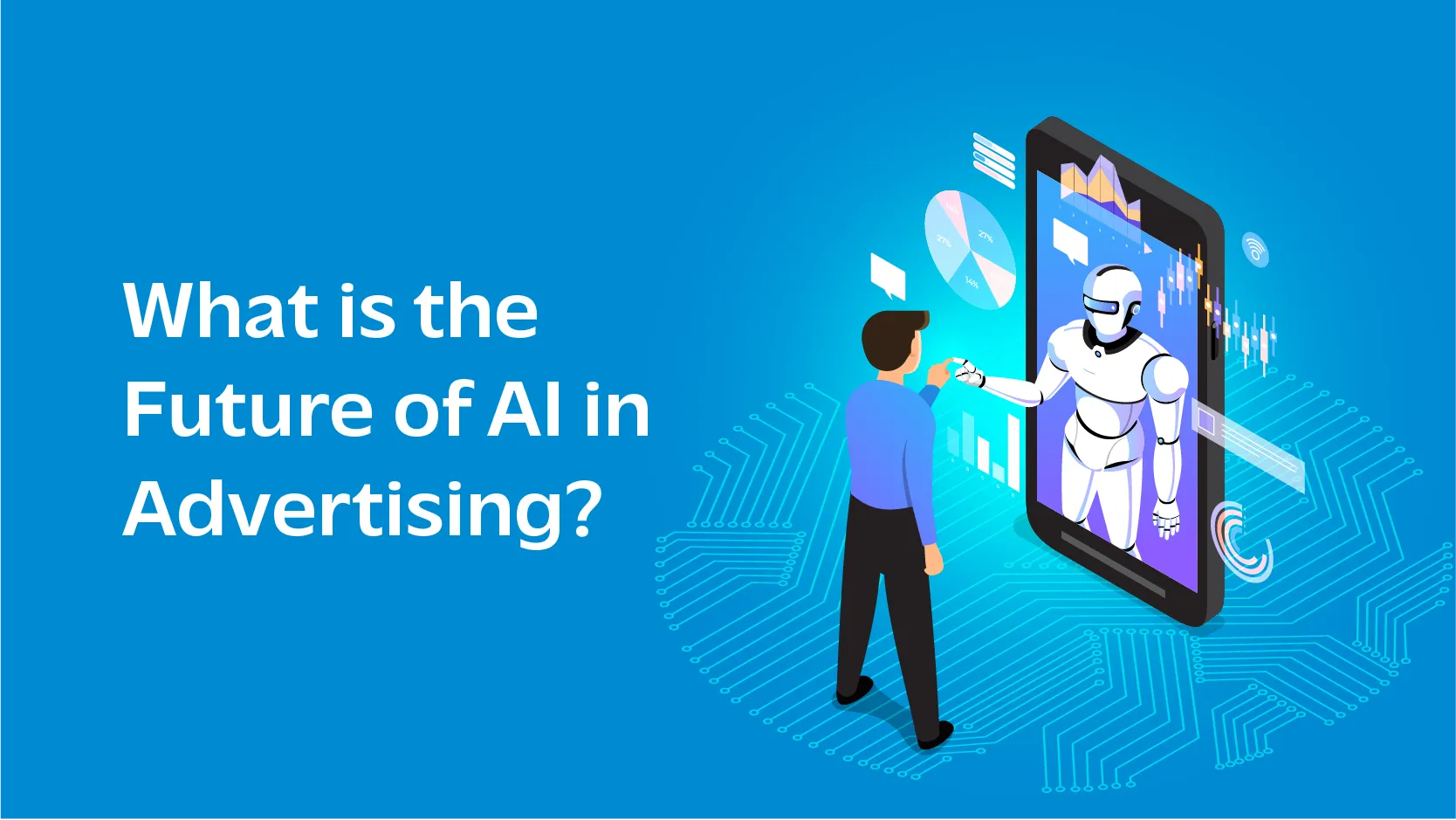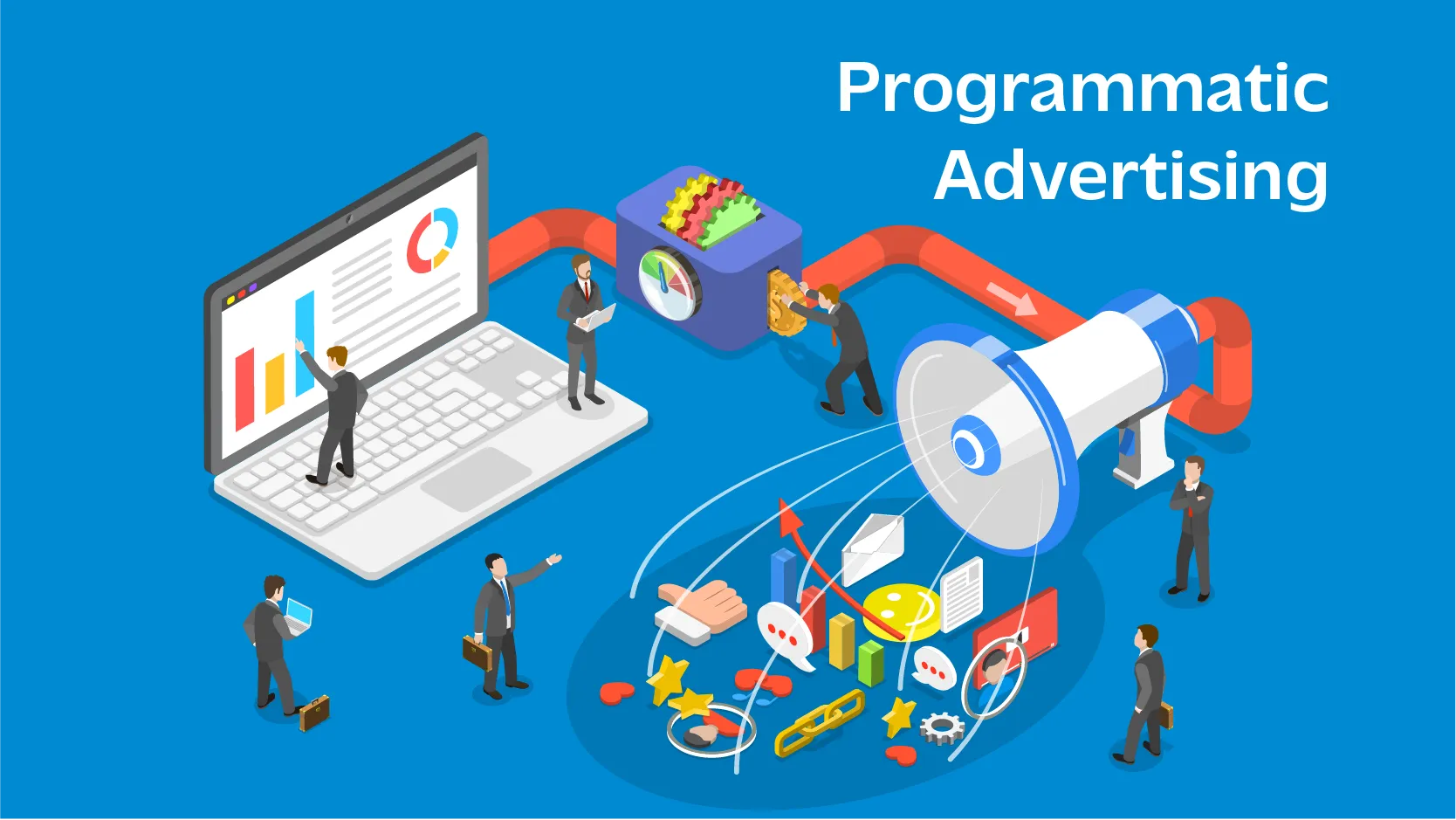Artificial intelligence (AI) has become every marketer’s best friend. It’s that everywhere; it’s not just a trend anymore—people are really starting to use it a lot.
99% of marketers use AI every day, and 91% integrate AI into their daily work routines. That’s a lot! AI in advertising is no exception. Big tech giants like Meta, Coca-Cola, Amazon, and Google use AI to create designs and ads that better serve their customer base.
If these companies use AI for ads, does that mean advertisers will be no longer needed? How can businesses use AI to improve leads? Importantly, what does the future look like? This article answers all your questions, so read on.
What is AI in advertising?
Artificial intelligence (AI) in advertising refers to the use of advanced algorithms and machine learning techniques to enhance the effectiveness and efficiency of advertising campaigns.
AI technologies analyze vast amounts of data to understand consumer behavior, optimize ad placements, and personalize marketing messages. This explains why advertisers are increasingly relying on AI.
About 88% of marketers believe using AI helps them to meet customer expectations and stay competitive.
AI not only helps optimize advertising but also boosts lead conversions. 26% of marketers who used AI chatbots for marketing campaigns saw a steady 10-20% surge in leads.
Also Read: What is Media Buying and Why is it Important?
How is AI being used in advertising?
Unlike humans, artificial intelligence tools can skim through data in a shorter duration. This gives marketers time to analyze and implement better strategies. Let’s see how companies can use AI for advertising.
1. Personalized Advertising
Netflix is a prime example of using AI for personalized advertising. The streaming giant employs machine learning algorithms to analyze user behavior, preferences, and viewing history.

This data allows Netflix to recommend shows and movies tailored to individual users, enhancing user engagement.
For instance, the thumbnails and promotional content displayed to users are often customized based on their viewing habits, which significantly increases the likelihood of clicks and views.
2. Dynamic Creative Optimization
Coca-Cola utilizes AI for dynamic creative ad optimization in its advertising campaigns. By employing AI algorithms, Coca-Cola can automatically generate and test various ad creatives in real time.
Source: “Create Real Magic” campaign made using an AI platform
The AI analyzes which versions of ads perform best with different audience segments and optimizes the campaign accordingly. This approach improves engagement rates and ensures brand’s messaging resonates with diverse consumer groups.
3. Predictive Analytics
Amazon uses AI-driven predictive analytics to enhance its advertising strategies. By analyzing vast amounts of consumer data, Amazon can predict which products a user is likely to purchase based on their browsing history and previous purchases.

This predictive capability allows Amazon to serve highly targeted ads to users, increasing the chances of conversion.
Based on the customer’s purchase history, Amazon developed AI algorithms that could suggest size recommendations.
“We’ve learned that customers are more likely to purchase and keep an item when a size is recommended for them,” says Aproov Chaudhri, Director of Computer Vision and Machine Learning at Amazon Fashion. “The size recommendation system analyzes millions of data points every day and generates billions of size recommendations each month for hundreds of millions of customers across 19 locales around the world.”
In 2024, Amazon launched the Fit Insights Tool, powered by a large language model, to analyze customer feedback on fit, style, and fabric.
This tool integrates returns data and size chart analyses with customer reviews, using machine learning to pinpoint issues in sizing.
By harnessing this data, brands can address fit problems, enhance their size communication, and refine future designs. This innovation helps reduce fit-related returns and ensures more accurate product listings, ultimately improving customer satisfaction.
4. Chatbots and Customer Engagement
Sephora has integrated AI-powered chatbots into its advertising strategy to enhance customer engagement. The Sephora Virtual Artist chatbot allows users to try makeup virtually and receive personalized product recommendations.
This interactive experience engages customers and drives sales by guiding them toward products that suit their preferences. The chatbot collects data on user interactions, which can be used to refine future advertising efforts.
Not just Sephora, 43% of marketers believe chatbots enhance their ability to educate customers.
5. Programmatic Advertising
Procter & Gamble (P&G) has embraced programmatic advertising powered by AI to optimize its ad spend. Using AI algorithms, P&G can analyze real-time data to make informed decisions about where and when to place ads.
This approach allows the company to target specific demographics more effectively and adjust campaigns based on performance metrics. For example, P&G has reported significant return on investment (ROI) improvements by using AI in programmatic advertising to automate and optimize its digital advertising efforts.
In a November 2023 survey of U.S. advertising decision-makers overseeing programmatic, 52% said AI use by demand-side and supply-side platforms is important.
How does AI target Ads?
Here’s how it works:
- Data Collection: AI gathers data from various sources, including browsing history, social media activity, purchase history, and demographic information.
- Audience Segmentation: It then segments the audience based on shared characteristics like interests, behaviors, and demographics.
- Predictive Analysis: AI uses machine learning algorithms to predict which ads are most likely to resonate with specific segments, optimizing ad placement.
- Real-time Adjustment: As new data comes in, AI continuously adjusts targeting strategies, ensuring ads reach the right audience at the right time.
- Contextual Targeting: AI analyzes the content being viewed and serves ads that are contextually relevant, increasing engagement chances.
This process makes ad targeting more precise, improving ad performance and return on investment.
What is the Future of AI in Advertising?

The future of AI in advertising looks quite promising. But this doesn’t mean marketers can solely rely on AI for churning out ads.
Take Google’s “Dear Sydney” ad as an example. It featured a father using AI to write a letter to his daughter’s Olympic idol, Sydney McLaughlin-Levrone, instead of doing it together.

What could have been a touching father-daughter moment was replaced by an AI-generated message, which didn’t resonate well with viewers.
Critics were harsh, with one calling it “one of the most disturbing commercials” they’d ever seen, while others questioned the very premise of AI expressing emotions on behalf of a child.
This backlash highlights that while AI has potential in advertising, relying too heavily on it can lead to missed emotional connections that only human creativity can truly capture. This is why it is safe to say that AI can’t replace advertisers. Instead, marketers can use AI side by side to improve their work.
Yet again, using AI in advertising is not all that bad. Meta was able to skyrocket its revenue to 22% YoY to $39 billion in 2024 Q2. This topped Wall Street’s expectations. The average price per ad increased by 10% annually, as did the number of ad impressions distributed throughout the app ecosystems owned by Facebook and Instagram.
By balancing AI’s capabilities with human creativity, the future of advertising will thrive on leveraging AI’s precision while ensuring that the human touch remains at its core.




Comments are closed.